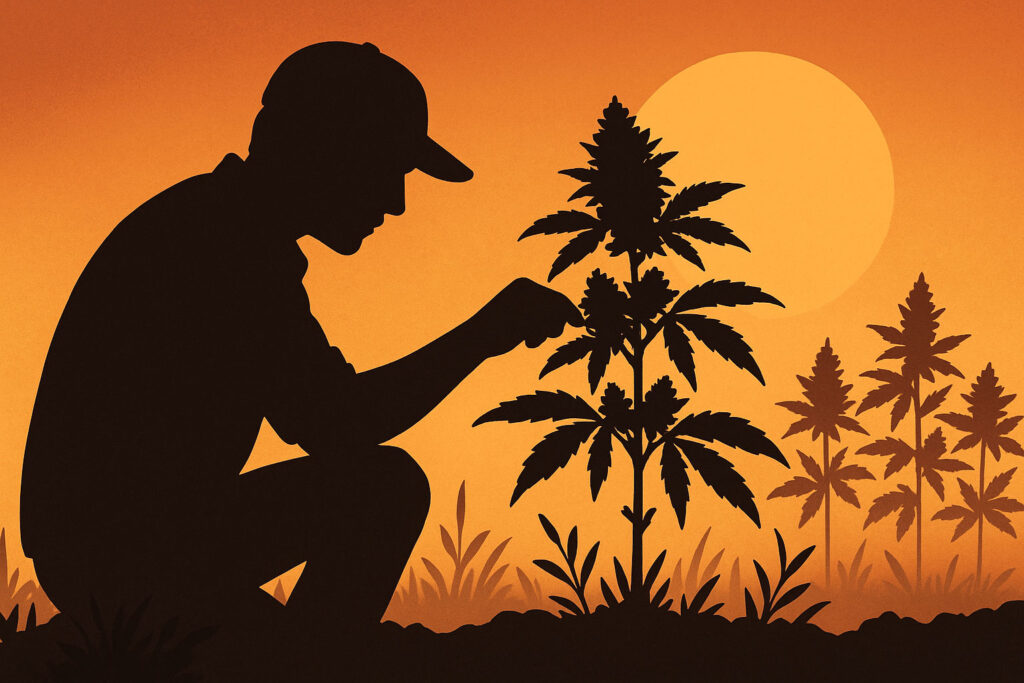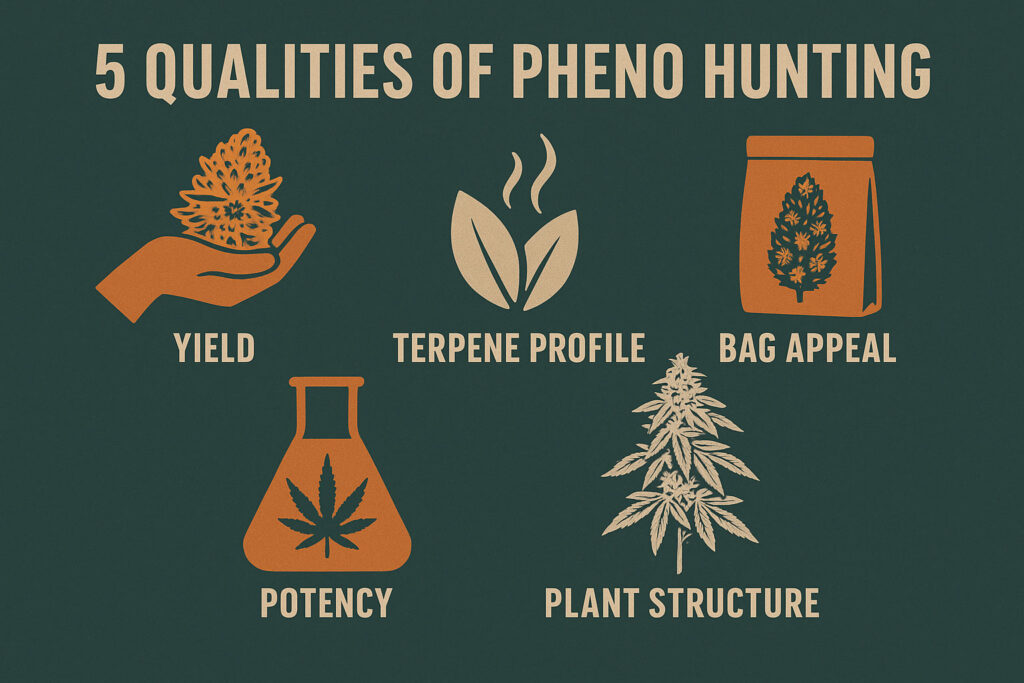
Breathing Your Way Back Home
A Buddhist parable of a blind turtle inspires reflection on life’s rarity, balancing samsara’s struggles with presence and spiritual homecoming.

At some point in your cultivation journey, you stop worrying about technique and you start wanting to discover new cultivars. It feels like playing the cultivation lottery. It’s time consuming, but deeply rewarding. Popping seeds in search of the golden ticket; in search of the new female expression of two genetics. It’s a year-long journey that sometimes yields absolutely nothing. I am talking of course about pheno hunting. At Mother Magnolia, pheno hunting is what my garden managers get the most hyped about – the new strain. Daily production demands – deployments, defoliation, transplanting – the daily grind of chop wood, carry water, rinse, repeat. Pheno hunting offers up a bit of break from that monotony and opens up the chance to be surprised by some new terpene or some new flower with its own cannabinoid finger print. It’s alchemy. A seed to a flower. Magic.
So what is a pheno hunt and what’s the Mother Magnolia approach?
A pheno hunt – short for phenotype hunt – in plants is the process of growing out a large number of seeds from the same genetic line (a strain, cross, or cultivar) in order to observe, compare, and select the most desirable phenotypes – the visible traits that a plant expresses. My friend and expert breeder James Loud has a checklist for all the traits he tracks across dozens and dozens of categories when he pheno hunts. James and many other breeders will run hundreds if not thousands of the same seeds to truly maximize the potential fro finding the needle in the haystack. At Mother Magnolia we don’t have the canopy space or the time to tackle that large a pheno hunt. We stick to smaller batches of 20-40 seeds per cultivar. For us this is manageable.
The potential traits you can look for are endless; but us here at Mother Magnolia our top 5: yield, terpene profile, bag appeal, potency and plant structure.

We are selecting for commercial cultivation. So we have to consider an overall yield as the first criteria. It’s very tough to work with a stingy yielding cultivar when you know that cycle after cycle you are leaving very significant revenue on the table. Something to be avoided. Every harvest we track A, B, T. Total A flower, B bud and Trim from every single strain on every harvest. That ABT score translates to dollars per plant. If we do are missing a significant percentage of total weight that table space can yield, that cultivar really isn’t a long-term member of the lineup.
The second criteria is the all-important terpene profile. If we don’t find a compelling nose on that finished flower, that pheno won’t make it into the lineup. We are currently in search of some deep dank gassy terps. For us, that terpene profile has been more elusive. We have it in our Roasted Garlic Margy. She wreaks. But her yields have been a real weakness. So we are hunting for that gassy terp with deeper yields.
The third criteria is bag appeal. How sexy is this bloom. There is such a range of looks in finished cannabis flowers. It’s spectacular. And when you find a really gorgeous flower that has that magazine look and feel. When you find a finished bloom that just looks amazing, you tend to overlook other shortcomings. The look of the finished flower in that bag is so huge in our pheno selection process. It’s an uphill battle if the flower just looks like weed.
The fourth criteria is potency. It is sad to say that in 2025 potency still remains a main driver for consumers. Totally absurd, but we can’t ignore it. So when we are pheno hunting, we have to wait to get labs back on the finished flower to know if it’s actually going to be a keeper. A low potency takes a huge chunk of valuation out of that flower. Sad but true. And by extension if we find a pheno with a really high potency like our Tahoe Brunch, the sell-through rates of high testers helps minimize any other minor flaws in the flower. Potency still runs the show.
And finally we look at the structure of the plant. We look at branching, stems strength, internodal spacing, and leaf production. One of our favorite cultivars of all-time was missing the plant structure requirement. And as a result, she is no longer in our line up. Her foliage and branching structure were miserable to cultivate. Her branching was too tight, made worse by dense heavy foliage. This poor plant structure was compounded by the fact that she was a very slow grower. The amount of time we would have to spend working her through veg to get her big enough to flip was simply too inefficient for commercial scale. So when plant structure is just an uphill battle, it is very tough to select that pheno.
But when all of these 5 qualities show up in a pheno hunt – which is very rare – it’s like magic. Everyone on the team gets hyped. And then the final selection process test: how does it smoke? This is the ultimate moment when a pass or fail grade is handed down by the team. If the flavors and experience of the smoke is really enjoyable and the “smoke notes” are all positive, she heads to production for a full table run. This is the validation moment. This is when we see what fourteen units in a full production cycle do. We check their A, B, T at harvest. Run the tests and more smoke notes. If this makes the cut again. Then she gets 4 tables and she is folded into the production cycles. Often we have to wait to develop more mom stock to have enough cuts for a full production run. This is why it takes about a year to get something into production.
If you have more questions about pheno hunting, we have a link to a short clip from our Pheno Hunting Module from our online course. Be sure to check it out here.

A Buddhist parable of a blind turtle inspires reflection on life’s rarity, balancing samsara’s struggles with presence and spiritual homecoming.

Pablo Neruda’s “Keeping Quiet” teaches stillness amid chaos, reminding us that silence, breath, and presence restore peace and balance.

Inspired by Rory McIlroy’s Masters win and local golf struggles, this meditation explores resilience, nerves, and the courage to persevere.